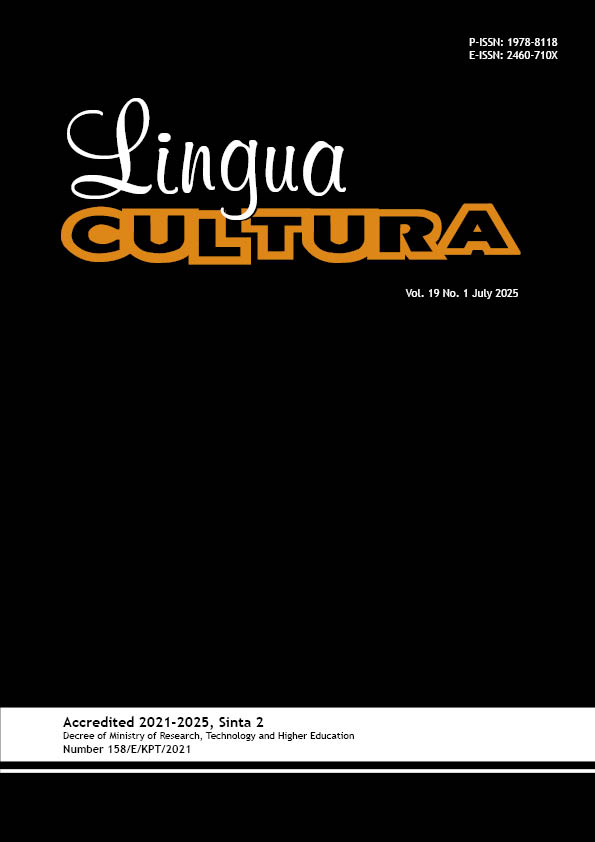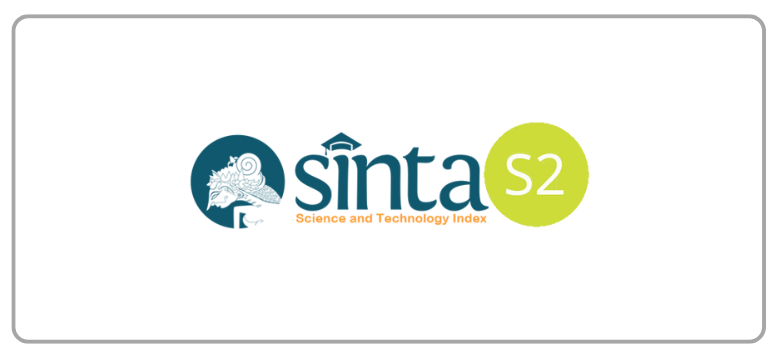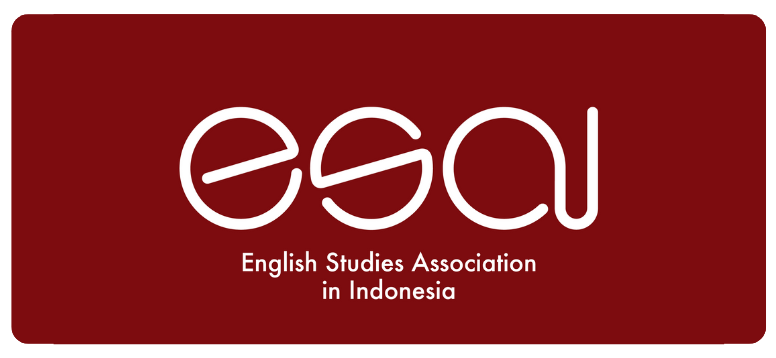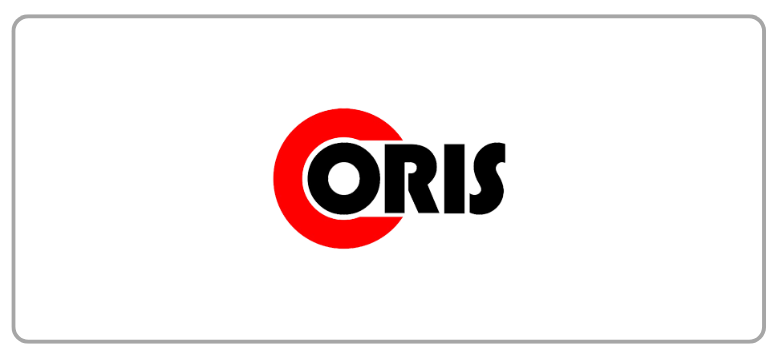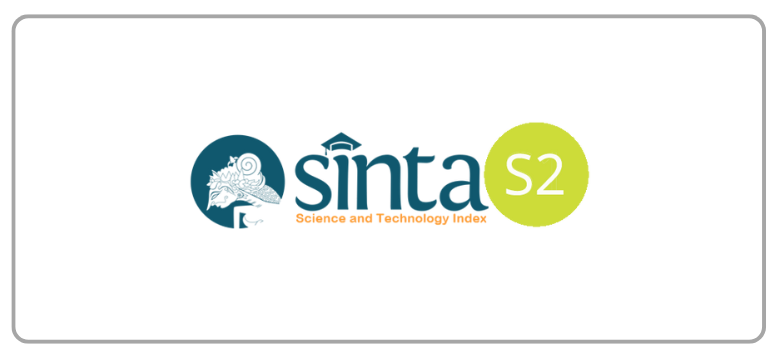Multimodal Discourse Analysis of the Pantene Campaign: Exploring Ideational and Representational Meanings
DOI:
https://doi.org/10.21512/lc.v19i1.12260Keywords:
Ideational meaning, inclusivity, multimodal discourse analysis, Pantene campaign, representational meaningAbstract
The research aims to examine how multimodal elements in the Pantene campaign, featuring Joyia and Mariana, explore the construction of meanings related to identity and inclusion through self-expression. Adopting a qualitative descriptive design, the research uses content analysis to explore verbal and visual modes within the advertisement. The researchers, serving as the primary instruments, collected the data through observation, transcription of spoken content, and selection of meaningful visual frames. The data were analyzed using Halliday’s Systemic Functional Linguistics to explore ideational meaning and Kress and van Leeuwen’s Visual Grammar to examine representational meaning. The findings suggest that relational processes are predominant in the verbal text, with a focus on individual qualities and internal experiences. The visual analysis identifies symbolic actions, such as hair combing, that represent family care and unity. These multimodal features contribute to the normalization of diversity and the communication of inclusive family values. The research contributes to the field of multimodal discourse analysis and provides practical relevance for researchers and practitioners in advertising and media studies. While the analysis offers a detailed interpretation of meaning-making processes, future research may incorporate audience perspectives to support the findings and expand the understanding of how such campaigns are received across contexts.
References
Adrian, D., & Faiza, E. (2022). Women’s empowerment in Nike advertisements: A multimodal analysis. ELS Journal on Interdisciplinary Studies in Humanities, 5(3), 416-424. https://doi.org/10.34050/elsjish.v5i3.22081
Agustian, A. F. (2021). Ideology in advertising discourse: A multimodal analysis approach. JELA (Journal of English Language Teaching, Literature and Applied Linguistics), 3(2), 21-33. https://doi.org/10.37742/jela.v3i2.55
Alarjani, F. A. (2025). Experiential meaning in Saudi undergraduate students’ writing: An examination of transitivity in analytical exposition texts. Dragoman, 17, 496-523. https://doi.org/10.63132/ati.2025.experi.1760
Alhadi, A. B., Gunawan, W., Wirza, Y., & Syihabuddin, S. (2022). Multimodal analysis of South Korean male skincare advertisements. Journal of English Language Studies, 7(1), 40. https://doi.org/10.30870/jels.v7i1.14027
Alsalem, N. K. (2020). A multimodal discourse analysis of Saudi Arabic television commercials. Language and Semiotic Studies, 6(3), 51-71. https://doi.org/10.1515/lass-2020-060303
Amatullah, F., Rosa, R. N., & Fitrawati, F. (2019). An analysis of multimodal in beauty product advertisements. English Language and Literature, 8(1). https://doi.org/10.24036/ell.v8i1.103122
Ananda, R., Fitriani, S. S., Samad, I. A., & Patak, A. A. (2019). Cigarette advertisements: A systemic functional grammar and multimodal analysis. Indonesian Journal of Applied Linguistics, 8(3), 616. https://doi.org/10.17509/ijal.v8i3.15261
Arnold-Murray, K. (2021). Multimodally constructed dialogue in political campaign commercials. Journal of Pragmatics, 173, 15-27. https://doi.org/10.1016/j.pragma.2020.11.014
Atma, S., & Awad, Z. (2023). Gender stereotypes in TV commercials: A multimodal analysis approach. Theory and Practice in Language Studies, 13(9), 2365-2374. https://doi.org/10.17507/tpls.1309.24
Azizah, S., & Refnaldi, R. (2022). Multimodal analysis of GoFood and GrabFood advertisements. English Language and Literature, 11(2), 192. https://doi.org/10.24036/ell.v11i2.117630
Boero, M. (2014). Traditional family and new family models: The agency of advertising images [Famiglia modello, modelli di famiglia: L’agentività delle immagini pubblicitarie]. Lexia, 17-18, 437-447. https://hdl.handle.net/11575/130381
Burgess, A., Wilkie, D. C. H., & Dolan, R. (2024). The power of beliefs: How diversity advertising builds audience connectedness. European Journal of Marketing, 58(9), 1969-1994. https://doi.org/10.1108/EJM-01-2023-0051
Busetto, L., Wick, W., & Gumbinger, C. (2020). How to use and assess qualitative research methods. Neurological Research and Practice, 2(1), 14. https://doi.org/10.1186/s42466-020-00059-z
Chen, L. (2014). Experiential metafunctional analysis of Winston S. Churchill’s speech on Hitler’s invasion of the U.S.S.R. English Language Teaching, 7(9), 132-136. https://doi.org/10.5539/elt.v7n9p132
Chen, Y., & Weninger, C. (2024). The potential of eye tracking data to strengthen CDA’ explanatory power: the case of multimodal critical discourse analysis of advertising persuasion. Critical Discourse Studies, 1-19. https://doi.org/10.1080/17405904.2024.2331641
Chernev, A., Hamilton, R., & Gal, D. (2011). Competing for consumer identity: Limits to self-expression and the perils of lifestyle branding. Journal of Marketing, 75(3), 66-82. https://doi.org/10.1509/jmkg.75.3.66
Creswell, J. W., & Creswell, J. D. (2017). Research design: Qualitative, quantitative, and mixed methods approach (5th Ed). Sage Publications. https://doi.org/10.1509/jmkg.75.3.66
Frunză, S. (2022). Communication of love in the consumer society. Journal for the Study of Religions and Ideologies, 21(63), 34-46.
Gerot, L., & Wignell, P. (1994). Making sense of functional grammar. Antipodean Educational Enterprises.
Ghaziani, A. (2008). The dividends of dissent: How conflict and culture work in lesbian and gay marches on Washington. University of Chicago Press.
Halliday, M. A. (2014). Language as social semiotic: The discourse studies reader. John Benjamin.
Halliday, M. A. K., & Matthiessen, C. (2014). Halliday’s introduction to functional grammar (4th Ed). Routladge.
Hampl, M. (2014). The system of transitivity in the war on terror discourse. Communications – Scientific Letters of the University of Žilina, 16(3), 46-51. https://doi.org/10.26552/com.c.2014.3.46-51
Hartono, D. A., Prima, S. A. B., & Dewobroto, W. S. (2022). A multimodal critical discourse analysis of Garnier Green Beauty advertisement. International Journal of English and Applied Linguistics (IJEAL), 2(2), 301-312.
He, W. (2022). Categorization of experience of the world and construction of transitivity system of Chinese. Word, 68(3), 317-347. https://doi.org/10.1080/00437956.2021.2003540
Hidayah, S. A. N., Degaf, A., Sa’adah, S. N., & Pratiwi, R. A. (2023). The language of beauty: Investigating persuasive strategies in advertising for cosmetic products. In Proceedings of the 5th International Conference on Language, Linguistics, and Literature (COLALITE 2023) (pp. 270-288). Atlantis Press. https://doi.org/10.2991/978-2-38476-140-1_28
Horn, A., & Horn, P. (2015). Identity is what we sell. In H. Kaufmann & M. F. Panni (Eds.). In Handbook of research on effective advertising strategies in the social media age (pp. 213-222). IGI Global. https://doi.org/10.4018/978-1-4666-8125-5.ch012
Huang, X. (2020). Selling points and promotional strategies in advertising: A multimodal discourse analysis of a Burger King’s print advertisement. Learning & Education, 9(2), 136. https://doi.org/10.18282/l-e.v9i2.1427
Ilonga, E., & Mapunda, G. (2022). Complementarity of communicative modes on meaning making in Tanzania’s digital telecom marketing: A social semiotic multimodal perspective. Southern African Linguistics and Applied Language Studies, 40(1), 87-99. https://doi.org/10.2989/16073614.2021.1999832
Jewitt, C., & Oyama, R. (2001). Visual meaning: A social semiotic approach. Sage visual methods (151st Ed.).
Karori, I. B., Akbar, N., Majeed, M., & Imran, M. (2020). Transitivity analysis of Kate Chopin’s “The Story of an Hour.” Journal of Advanced Research in Dynamical and Control Systems, 12(7), 2546-2557.
Kim, S. Y. (2021). College disability support offices as advertisements: A multimodal discourse analysis. Discourse Studies, 23(2), 166-190. https://doi.org/10.1177/1461445620966921
Kjeldsen, J., & Hess, A. (2021). Experiencing multimodal rhetoric and argumentation in political advertisements: A study of how people respond to the rhetoric of multimodal communication. Visual Communication, 20(3), 327-352. https://doi.org/10.1177/14703572211013399
Koussouhon, L. A., & Dossoumou, A. M. (2014). Lexico-grammatical analysis of Yellow-Yellow by Kaine Agary with a focus on experiential and textual meanings. Mediterranean Journal of Social Sciences, 5(23), 2430-2438. https://doi.org/10.5901/mjss.2014.v5n23p2430
Kress, G., & van Leeuwen, T. (2006). Reading images: The grammar of visual design (2nd Ed.). Routledge.
Lahuerta-Pujol, C., Moreno-Cano, A., & Miguel, J.-C. (2022). Multimodal analysis of advertising discourse during the lockdown due to COVID-19: Comparison of the communication strategies of financial services and automotive products in Spain. Communication & Society, 35(1), 215-232.
Lee, S., & Heo, J. (2016). The moderating role of cultural orientation in explaining temporal orientation of self-referencing. Asian Journal of Communication, 26(4), 333-349. https://doi.org/10.1080/01292986.2016.1148185
Liu, S. (2019). A multimodal discourse analysis of the interactive meaning in public service advertisement. Journal of Advances in Linguistics, 10, 1523-1534. https://doi.org/10.24297/jal.v10i0.8196
Machin, D., & Mayr, A. (2012). How to do critical discourse analysis: A multimodal introduction. Sage. https://doi.org/10.1080/07268602.2015.1033673
Ulati, N. M. S., Pratama, A. D. Y., & Umiyati, M. (2022). Multimodal critical discourse analysis on the advertisement of Colgate. KnE Social Sciences, 259-266. https://doi.org/10.18502/kss.v7i10.11294
Mismetti, M., Rondi, E., & Bettinelli, C. (2023). Family business system dynamics in the aftermath of in-law entry: A reflection on emotions and strategic change. Long Range Planning, 56(5). https://doi.org/10.1016/j.lrp.2022.102250
Murray, N. (2020). A multimodal analysis using an exemplar from Japanese television advertising. Athens Journal of Mass Media and Communications, 6(3), 161-176. https://doi.org/10.30958/ajmmc.6-3-2
Nightingale, A. (2009). Triangulation. International Encyclopedia of Human Geography (Vol. 11, pp. V11-489–V11-492). Elsevier. https://doi.org/10.1016/B978-008044910-4.00552-6
Nightingale, A. J. (2019). Triangulation. International Encyclopedia of Human Geography (2nd Ed., pp. 477-480). https://doi.org/10.1016/B978-0-08-102295-5.10437-8
Njoku, N. C. (2023). A multimodal discourse analysis of five selected online bank advertisements. Shodh Sari-An International Multidisciplinary Journal, 02(03), 294-312. https://doi.org/10.59231/sari7606
O’Donohoe, S., Gram, M., & Marchant, C. (2023). Grandparenting relations in advertising’s ‘familial fictions.’ Journal of Consumer Culture, 23(4), 789-808. https://doi.org/10.1177/14695405221140546
Polkinghorne, D. E. (2006). An agenda for the second generation of qualitative studies. International Journal of Qualitative Studies on Health and Well-Being, 1(2), 68-77. https://doi.org/10.1080/17482620500539248
Rajendra, T. R. (2020). Transitivity choices in an abridged text: The case of a graphic novel. Studies in English Language and Education, 7(2), 544-557.
Saladri, R., Dash, M., & Dash, S. (2020). Multimodal discourse analysis of two digital advertising images from facebook. Psychology and Education, 57(9), 935-939.
Santos, S., & Santo, P. E. (2023). Brands and stories in ads: The relationship between storytelling and brand distinctiveness. In Handbook of research on contemporary storytelling methods across new media and disciplines (pp. 116-137). IGI Global. https://doi.org/10.4018/978-1-7998-6605-3.ch007
Sari, N., Umiyati, M., & Kardana, I. N. (2022). Multimodal discourse dnalysis of Djarum 76 advertisement entitled “New Normal.” KnE Social Sciences, 267-278. https://doi.org/10.18502/kss.v7i10.11295
Schubert, C. (2021). Multimodal cohesion in persuasive discourse: A case study of televised campaign advertisements in the 2020 US presidential election. Discourse, Context & Media, 43(100537). https://doi.org/10.1016/j.dcm.2021.100537
Sender, K. (2018). The makeover: Reality television and reflexive audiences. NYU Press. https://doi.org/10.18574/nyu/9780814740699.001.0001
Siffrinn, N., & Gebhard, M. (2020). Disciplinary discourses and second language literacies: A systemic functional linguistic perspective. The Routledge Handbook of Second Language Acquisition and Discourse (pp. 51-63). Routledge. https://doi.org/10.4324/9781003177579-6
Sluss, D. M., & Ashforth, B. E. (2007). Relational identity and identification: Defining ourselves through work relationships. Academy of Management Review, 32(1), 9-32. https://doi.org/10.5465/amr.2007.23463672
Stanton, J. V, & Guion, D. T. (2013). Taking advantage of a vulnerable group? Emotional cues in ads targeting parents. Journal of Consumer Affairs, 47(3), 485-517. https://doi.org/10.1111/joca.12018
Tanjung, Y. (2021). Multimodal analysis in Covid-19 advertisement from Minister of Health. A Thesis: University of Muhammadiyah Sumatera Utara Medan.
Trees, A. R., & & Kellas, J. K. (2009). Telling tales: Enacting family relationships in joint storytelling about difficult family experiences. Western Journal of Communication, 73(1), 91-111. https://doi.org/10.1080/10570310802635021
Ushchapovska, I., Movchan, D., & Chulanova, H. (2020). Idioethnic features of multimodal advertising texts: A case study of coffee commercials. SKASE Journal of Theoretical Linguistics, 17(5), 222-235.
Utoyo, A. W. (2017). How do people’s perceptions of enjoy Jakarta advertising campaign using a social semiotics opinion? Advanced Science Letters, 23(1), 92-95. https://doi.org/10.1166/asl.2017.7132
Wa-Mbaleka, S. (2020). The researcher as an instrument. Advances in Intelligent Systems and Computing (Vol. 1068, pp. 33-41). Springer. https://doi.org/10.1007/978-3-030-31787-4_3
Wang, L., & Xing, S. (2024). Corpus-based multimodal discourse analysis of public service advertisement from the World Wildlife Fund. In Proceedings of the 2nd International Conferencon Educational Knowledge and Informatization (EKI 2024) (pp. 217-222). ACM. https://doi.org/10.1145/3691720.3691756
Wilkie, D. C. H., Burgess, A. J., Mirzaei, A., & Dolan, R. M. (2023). Inclusivity in advertising: A typology framework for understanding consumer reactions. Journal of Advertising, 52(5), 721-738. https://doi.org/10.1080/00913367.2023.2255252
Xing, C., & Feng, D. (2023). Multimodal intertextuality and persuasion in advertising discourse. Discourse & Communication, 17(5), 613-629. https://doi.org/10.1177/17504813231170579
Downloads
Published
How to Cite
Issue
Section
License
Copyright (c) 2025 Zainur Rofiq, Alfina Lailatul Masrukin, Agwin Degaf

This work is licensed under a Creative Commons Attribution-ShareAlike 4.0 International License.
Authors who publish with this journal agree to the following terms:
a. Authors retain copyright and grant the journal right of first publication with the work simultaneously licensed under a Creative Commons Attribution License - Share Alike that allows others to share the work with an acknowledgment of the work's authorship and initial publication in this journal.
b. Authors are able to enter into separate, additional contractual arrangements for the non-exclusive distribution of the journal's published version of the work (e.g., post it to an institutional repository or publish it in a book), with an acknowledgment of its initial publication in this journal.
c. Authors are permitted and encouraged to post their work online (e.g., in institutional repositories or on their website) prior to and during the submission process, as it can lead to productive exchanges, as well as earlier and greater citation of published work.
USER RIGHTS
All articles published Open Access will be immediately and permanently free for everyone to read and download. We are continuously working with our author communities to select the best choice of license options, currently being defined for this journal as follows: Creative Commons Attribution-Share Alike (CC BY-SA)
